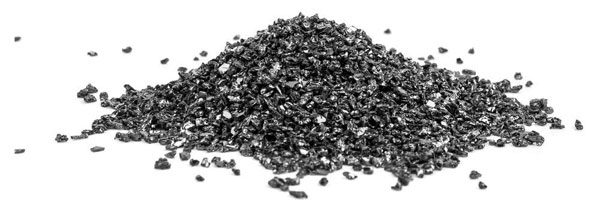
At high temperatures, silicon sand, coke, wood, as well as other raw materials are melted in a resistance furnace to create Silicon carbide powder. Anti-wear, anti-corrosion, hot temperatures, impact resistance, solid thermal conduction, and other properties are just some of the benefits of silicon carbide's stable chemical makeup.
Hard chemical substances are made of silicon and carbon, and these are also known as carborundum. The exceedingly rare mineral moissanite is found in nature and is a semiconductor. However, since 1893, it's been mass-produced as granules and crystals for use as an obstinate. Sintering silicon carbide grain together creates tough ceramics that find widespread use in applications requiring high durabilities, such as automobile brakes, clutches, and especially ceramic plates in bulletproof vests. The Lely process can create very substantial single crystals of silicon dioxide, which can then be faceted into synthetic moissanite.

Because of its long life and inexpensive price, Silicon carbide powder has become a common abrasive in contemporary lapidary. Because of its abrasion resistance, it is put to use in manufacturing operations like grinding, polishing, water-jet cutting, and sandblasting. Sandpaper & skateboard grip tape are both made by laminating paper with silicon carbide particles.
SiC was first used in electricity in spark lightning arresters in electrical grids. These components have a high resistance until a particular voltage, VT, is applied between them. At this point, the resistance must drop and stay low until the electrical current is no longer above VT.
Since its early discovery, Silicon carbide powder's voltage-dependent impedance has been used by connecting columns of SiC pellets to the earth that sits between high-voltage power lines. If this type of voltage is high enough after a lightning strike, the SiC column will connect, diverting the strike current away from the power line and into the ground. SiC columns were found to conduct strongly at typical power-line voltage levels, necessitating the use of a spark gap in line with them.

Write a Message